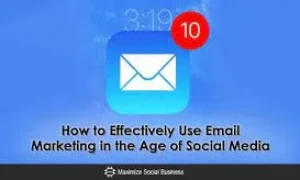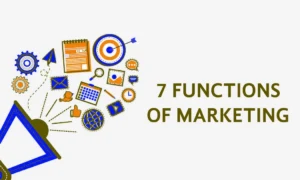In today’s highly competitive business landscape, acquiring new customers is essential for sustainable growth and success. Acquisition marketing plays a pivotal role in reaching and converting potential customers into loyal advocates of your brand. In this article, we will explore the concept of acquisition marketing, its importance, critical strategies for success, measuring and tracking its impact, integration with other marketing efforts, and overcoming common challenges. Let’s dive in and unlock the secrets of effective acquisition marketing!
What is Acquisition Marketing?
Definition of Acquisition Marketing
Acquisition marketing refers to the strategies and tactics employed by businesses to attract, engage, and convert new customers. It involves various marketing channels, campaigns, and initiatives to increase brand awareness, drive website traffic, and generate leads and sales.
Importance of Acquisition Marketing
Acquisition marketing is vital for business growth, allowing companies to expand their customer base and increase market share. By targeting and acquiring new customers, businesses can tap into new revenue streams, build brand recognition, and establish a loyal customer base. Effective acquisition marketing enables businesses to stay competitive in the ever-evolving marketplace.
Critical Strategies for Successful Acquisition Marketing
To maximize the impact of acquisition marketing, here are some key strategies to consider:
Target Audience Identification
Identifying and understanding your target audience is fundamental for effective acquisition marketing. Conduct market research, and analyze customer demographics, psychographics, and behavior patterns to create detailed buyer personas. Knowing your ideal customers allows you to tailor your marketing efforts to resonate with their needs and preferences.
Effective Channels and Campaigns
Selecting the proper marketing channels and crafting compelling campaigns are crucial for successful acquisition marketing. Leverage digital and traditional channels such as search engine optimization (SEO), social media advertising, content marketing, email marketing, and influencer partnerships. Develop captivating content and engaging visuals to capture the attention of your target audience.
Compelling Offers and Incentives
To entice potential customers, provide compelling offers and incentives. Offer exclusive discounts, limited-time promotions, free trials, or valuable content in exchange for their engagement or contact information. Create a sense of urgency and showcase the unique value your product or service’s exceptional value.
Data Analysis and Optimization
Regularly analyze and optimize your acquisition marketing efforts to improve results. Leverage data analytics tools to track your campaigns’ performance, identify improvement areas, and make data-driven decisions. Test different approaches, iterate on successful strategies, and refine your messaging to enhance conversion rates and ROI.
Measuring and Tracking Acquisition Marketing Success
To gauge the effectiveness of your acquisition marketing efforts, consider the following:
Key Metrics and KPIs
Determine key performance indicators (KPIs) aligned with your business goals. Track metrics such as website traffic, click-through rates (CTR), conversion rates, cost per acquisition (CPA), customer lifetime value (CLV), and return on ad spend (ROAS). Monitor these metrics regularly to assess the success of your acquisition marketing campaigns.
A/B Testing and Experimentation
Implement A/B testing and experimentation to optimize your acquisition marketing strategies. Test elements such as headlines, visuals, calls to action (CTAs), landing page layouts, and ad placements. Analyze the results and iterate on the variations that yield the best outcomes. Continual experimentation ensures ongoing improvement and better alignment with your target audience.
Integration with Other Marketing Efforts
Acquisition marketing should be integrated with other marketing efforts for a cohesive and comprehensive approach. Consider the following:
Acquisition and Retention Strategies
Integrate acquisition marketing with customer retention strategies. Once you acquire new customers, focus on nurturing those relationships through personalized communication, loyalty programs, and exceptional customer experiences. Retaining existing customers can be more cost-effective than acquiring new ones.
Personalization and Customer Journey
Leverage data and automation to personalize the customer journey. Tailor your marketing messages and offers based on individual preferences, behavior, and stage of the buying cycle. Create seamless and consistent experiences across different touchpoints to enhance engagement and increase the likelihood of conversions.
Overcoming Challenges in Acquisition Marketing
While acquisition marketing offers significant opportunities, it also comes with challenges. Here are some common hurdles and strategies to overcome them:
Budget Constraints
Limited budgets can restrict the scope of acquisition marketing initiatives. Prioritize channels and strategies that align with your target audience and yield the highest returns. Optimize your marketing spend by focusing on cost-effective tactics and continuously monitoring and adjusting your budget allocation.
Competitive Landscape
Competition in the marketplace can make acquiring new customers more challenging. Differentiate your brand by highlighting unique value propositions, providing exceptional customer service, and delivering outstanding experiences. Conduct thorough competitor analysis to identify gaps and opportunities in the market.
Adapting to Changing Consumer Behavior
Consumer behavior is constantly evolving, necessitating agility and adaptation in acquisition marketing. Stay updated on market trends, technological advancements, and shifts in consumer preferences. Embrace emerging channels and strategies to reach and engage your target audience effectively.
Conclusion
Acquisition marketing is a critical component of business growth and success. Businesses can attract and convert new customers by implementing targeted strategies, leveraging effective channels and campaigns, and measuring and optimizing results. Integration with other marketing efforts and overcoming challenges ensures a holistic approach to customer acquisition. Embrace the power of acquisition marketing to unlock new growth opportunities and propel your business forward.
FAQs
1. How long does it take to see results from acquisition marketing campaigns?
The timeline for seeing results from acquisition marketing campaigns varies depending on your industry, target audience, competition, and campaign strategies. Some campaigns may yield immediate results, while others require longer-term nurturing and optimization. Continual monitoring and data analysis can help assess the effectiveness and make necessary adjustments.
2. What are some cost-effective acquisition marketing channels for startups?
For startups with limited budgets, cost-effective acquisition marketing channels include social media marketing, content marketing, search engine optimization (SEO), influencer partnerships, and referral programs. These channels can generate targeted traffic and lead without significant financial investments.
3. How can I measure my acquisition marketing campaigns’ return on investment (ROI)?
To measure ROI, track the costs associated with your acquisition marketing campaigns (e.g., ad spend, campaign management fees) and compare them to the revenue generated from the acquired customers. Calculate metrics such as customer acquisition cost (CAC) and customer lifetime value (CLV) to determine the profitability and efficiency of your campaigns.
4. Is acquisition marketing only relevant for e-commerce businesses?
No, acquisition marketing is relevant for businesses across various industries, including e-commerce and brick-and-mortar establishments. The goal is to attract and convert new customers, regardless of the business model. The strategies and tactics may differ based on the business’s nature, but the acquisition marketing principles remain applicable.
5. How can I ensure the success of my acquisition marketing efforts in the long term?
To ensure long-term success, continually analyze and adapt your acquisition marketing strategies based on market trends, customer feedback, and performance data. Stay updated on industry best practices, experiment with new approaches, and foster a culture of innovation within your marketing team. Regularly evaluate and refine your acquisition marketing strategies to maintain a competitive edge.










































